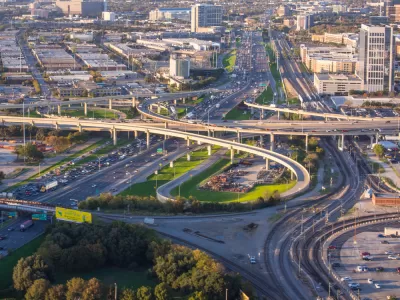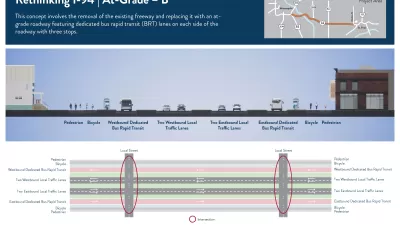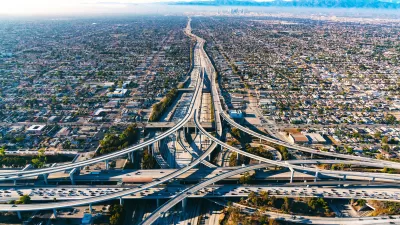Rather than removing the freeway altogether, which the Texas Department of Transportation calls ‘unfeasible,’ the agency recommends burying the road in a billion-dollar, ten-lane trench through the city’s downtown.

“For many years now, TxDOT has studied the feasibility of removing Interstate 345, which is a 1.7-mile segment of elevated highway that dissects downtown Dallas in Deep Ellum.” But after concluding that “removing the highway is unfeasible,” Joe Cortright writes in Strong Towns, “TxDOT now recommends tearing down the elevated freeway and rebuilding it in a 65-foot-deep trench that will contain 10 travel lanes and cost more than a billion dollars.”
According to Cortright, “If this hybrid approach moves forward, it seems to send a pretty clear message that highway capacity and maintaining commute times are the central priority of the Dallas Metro, not reconnecting neighborhoods or improving the downtown neighborhood quality of life.”
The article describes the original proposal for removing the freeway. “Urban planners Kennedy and Brandon Hancock first pitched the idea of tearing I-345 out, which would free up land the city could re-zone to create a mix of housing, office, and retail. The D Magazine article says TxDOT estimated in 2016 that removal would generate about $2.5 billion in new net value, a ‘significant increase in employment totals,’ and an additional $67.4 million in property tax revenue over 30 years.”
For more details on the TxDOT recommendation, listen to the latest episode of Strong Towns’ Upzoned podcast.
FULL STORY: TxDOT Proposes to Dig a $1 Billion Infrastructure Grave in Downtown Dallas

Trump Administration Could Effectively End Housing Voucher Program
Federal officials are eyeing major cuts to the Section 8 program that helps millions of low-income households pay rent.

Planetizen Federal Action Tracker
A weekly monitor of how Trump’s orders and actions are impacting planners and planning in America.

Ken Jennings Launches Transit Web Series
The Jeopardy champ wants you to ride public transit.

Rebuilding Smarter: How LA County Is Guiding Fire-Ravaged Communities Toward Resilience
Los Angeles County is leading a coordinated effort to help fire-impacted communities rebuild with resilience by providing recovery resources, promoting fire-wise design, and aligning reconstruction with broader sustainability and climate goals.

When Borders Blur: Regional Collaboration in Action
As regional challenges outgrow city boundaries, “When Borders Blur” explores how cross-jurisdictional collaboration can drive smarter, more resilient urban planning, sharing real-world lessons from thriving partnerships across North America.

Philadelphia Is Expanding its Network of Roundabouts
Roundabouts are widely shown to decrease traffic speed, reduce congestion, and improve efficiency.
Urban Design for Planners 1: Software Tools
This six-course series explores essential urban design concepts using open source software and equips planners with the tools they need to participate fully in the urban design process.
Planning for Universal Design
Learn the tools for implementing Universal Design in planning regulations.
Ada County Highway District
Clanton & Associates, Inc.
Jessamine County Fiscal Court
Institute for Housing and Urban Development Studies (IHS)
City of Grandview
Harvard GSD Executive Education
Toledo-Lucas County Plan Commissions
Salt Lake City
NYU Wagner Graduate School of Public Service





























